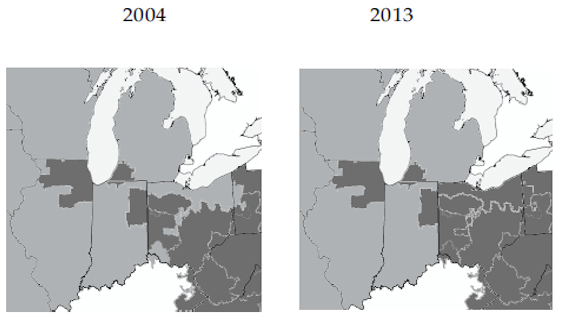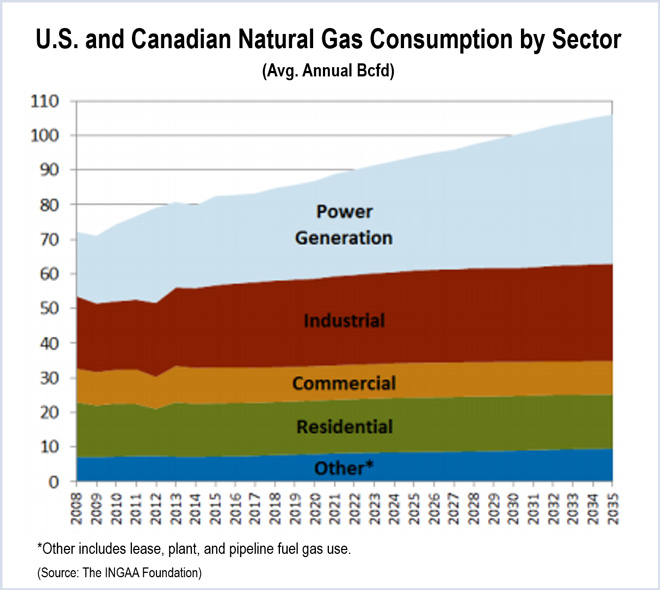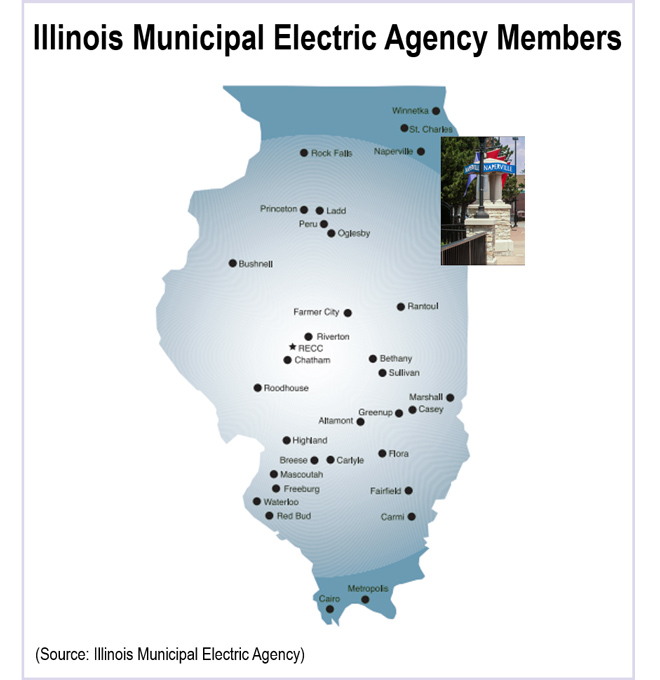By Suzanne Herel, Michael Brooks and Rich Heidorn Jr.
More than 60 parties filed comments or protests in response to PJM’s Capacity Performance proposal before last week’s deadline, with states and load-serving entities expressing skepticism over the need for a major overhaul and generators split over elements they like and others they insist must be changed.
The Electric Power Supply Association, which represents generators, was singularly conflicted, saying it “generally supports” the proposal, but joined with other generators in complaining that the proposed changes to force majeure provisions were unduly punitive.
EPSA also joined states and LSEs in criticizing the limited stakeholder input before PJM’s Board of Managers made its unilateral filing with the Federal Energy Regulatory Commission on Dec. 12. But the association said implementation of the new structure should not be delayed by needed changes.
In a 51-page filing, PJM’s Independent Market Monitor said it “strongly supports” the proposal but listed numerous changes it said were needed to prevent market manipulation and clarify the oversight roles of PJM and the Monitor.
Most other commenters fell clearly into camps of supporters or opponents.
PJM’s proposal would increase the reliability expectations of capacity resources with a “no excuses” policy. It is expected to result in both larger capacity payments and higher penalties for non-performance. (See What You Need to Know about PJM’s Capacity Performance Proposal.)
The details are outlined in nearly 1,300 pages filed in two dockets:
- EL15-29 contains proposed changes to PJM’s Operating Agreement and Tariff “to correct present deficiencies in those agreements on matters of resource performance and excuses for resource performance.”
- ER15-623 proposes changes to the Reliability Pricing Model rules in the Tariff and Reliability Assurance Agreement.
Below is a summary of the main arguments presented in the comments.
Supporters
Those supporting the proposal included the Natural Gas Supply Association, America’s Natural Gas Alliance and the Energy Storage Association.
“The Capacity Resource Performance provision would begin to address PJM’s current difficulties by incenting investments by generators that would help them perform more reliably and economically even during periods of peak demand,” said the Natural Gas Supply Association, which represents gas producers and marketers.
The Energy Storage Association lauded the proposal as an opportunity for energy storage resources to participate in PJM’s capacity market.
Exelon said it “strongly agrees with PJM on the urgent need” for the changes to address “an imminent reliability crisis due to a capacity market design that fails to ensure that generators who have made capacity commitments actually perform when they are needed.”
Exelon, the nation’s largest nuclear operator, stands to benefit perhaps more than any other market participant from the proposal’s incentives to ensure generators have secure fuel supplies.
Penalties, Force Majeure
Unlike most other generators, Exelon complained that PJM’s proposed non-performance penalties were too lax. It said the RTO’s method for determining the hourly penalty rate is flawed and will result in much lower penalties than intended. It also called on the commission to clarify that a forced outage due to fuel unavailability during emergencies, or “performance assessment hours,” will result in automatic referral to the commission for violation of the Tariff.
Other generators complained that the penalties are already too harsh.
“Redefining force majeure to apply only when catastrophic conditions occur over the entire PJM region is unnecessarily broad and, as applied, too punitive to generators,” the PJM Power Providers (P3 Group) said. “Notwithstanding the most prudent investments, it is nonetheless impossible for every generator to foresee every eventuality. Equally as important, it is illogical to apply a penalty for nonperformance of a generator based on the requirement that the entire PJM operational system would need to be negatively impacted.”
Not Enough
American Electric Power, Dayton Power and Light, FirstEnergy, Buckeye Power and East Kentucky Power Cooperative also called for a reduction in proposed non-performance penalties in a 186-page filing.
The group, filing as the PJM Utilities Coalition, said the proposal is insufficient to correct a revenue inadequacy problem that they said is threatening reliability. They said that the proposal fails to eliminate incentives for bidding as a price-taker and that clearing multiple products simultaneously with different performance obligations will result in price suppression.
Too Much, Too Expensive
Load-serving entities, however, complained that PJM’s redesign is overkill and will result in unnecessary price increases.
“Capacity Performance is too much, too quickly, for no clearly stated reason,” the Old Dominion and Southern Maryland electric cooperatives said in a joint filing with American Municipal Power.
The Transition Coalition — whose members include the PJM Industrial Customer Coalition, cooperatives and other load-serving entities — said its members estimate the proposal would cost as much as $2.8 billion in the 2016/17 delivery year and $3.6 billion in the 2017/18 delivery year. “What will we get in return for billions of dollars in new payments?” it asked.
Similarly, Pepco Holdings Inc. said PJM should be required to provide a more thorough analysis of its proposal’s impacts, including costs and benefits.
Some commenters took aim at the transition provisions that would apply to resources that clear in the base capacity auctions this May and in 2016.
“Acceptance would constitute retroactive ratemaking,” the Retail Energy Supply Association said, while Direct Energy maintained the transition mechanism contained “billions of dollars in unforeseen costs on the region.”
Impact on Renewables
Public interest organizations said that renewable, energy efficiency and demand response resources would be disadvantaged by the new market structure, concerns echoed by the American Wind Energy and Solar Energy Industries associations.
The Environmental Defense Fund, the Natural Resources Defense Council, the Sierra Club, the Sustainable FERC Project and the Union of Concerned Scientists filed a joint protest, calling on FERC to either reject the proposal, set it for evidentiary hearing or exempt non-fossil fuel resources from the proposed penalties.
“Unlike fuel-based generation, renewable generation and non-fuel-based demand-side resources cannot become available all year round through upgrades, and cannot avail themselves to the benefits of being able to firm up fuel supply and pass associated costs to consumers accorded to fuel-based generation under this rule,” the group said.
States: Evidentiary Hearing Needed
The concerns of the states within PJM’s territory differed, with some warning of higher rates and others complaining the proposal violates state resource planning authority. Almost all states, even those who generally support PJM’s overhaul efforts, said the proposal needed changes as a result of it being rushed without adequate stakeholder input. Many also called for FERC to hold an evidentiary hearing.
The Organization of PJM States Inc. (OPSI) said it could not determine the need for the proposal or whether it would result in just rates because PJM had not provided sufficient analysis.
“To better quantify the impact of the proposal on customers’ rates, and on system operations and grid reliability … requires the development, presentation and evaluation of data that have not yet been provided by PJM.”
Capacity Performance is “Overreaction”
Some stakeholders also said the proposal changes more than is necessary.
The Delaware Public Service Commission called the proposal “an overreaction” to the poor generator response in January 2014. “All stakeholders should have an opportunity to fully evaluate the [proposal] before it is implemented with undeterminable and questionable costs and unquantified benefits,” it said.
In a joint protest, consumer advocates in Maryland, New Jersey, D.C., Delaware, Ohio and Illinois, along with the PJM Industrial Customer Coalition, said the proposal is “unnecessarily costly and disproportionate to the level of changes that are required. The sole focus should be on revamping the structure of penalties that applies to cleared capacity resources, to align actual performance with the level of revenue that cleared capacity resources currently receive.”
The Illinois Commerce Commission agreed. “Addressing deficiencies revealed by 2014’s winter conditions is a critical need, but the [proposal] goes far beyond addressing the specific issues that likely contributed to poor generator performance during this period,” the ICC said. “Rather, the [proposal] represents an extensive revision and, in some of its elements, is an unnecessary reworking of the RPM model.”
The Pennsylvania Public Utility Commission said it supports PJM’s changes to generators’ performance requirement. But it said FERC should “reject or modify the other changes to PJM’s Tariff filing wherein PJM seeks to unilaterally and, without stakeholder support, alter the provisions of RPM that have developed through much deliberation by FERC, PJM and stakeholders and that contribute to the functioning of healthy wholesale markets.”
For example, the PUC said it was concerned that how PJM defines what qualifies as a Capacity Performance resource would affect DR resources. “The characteristics of DR providers are not compatible with PJM’s proposed trading restrictions and should be eliminated for these types of resources given the fundamental nature of the underlying characteristics of residential, business and industrial customers,” the commission said.










